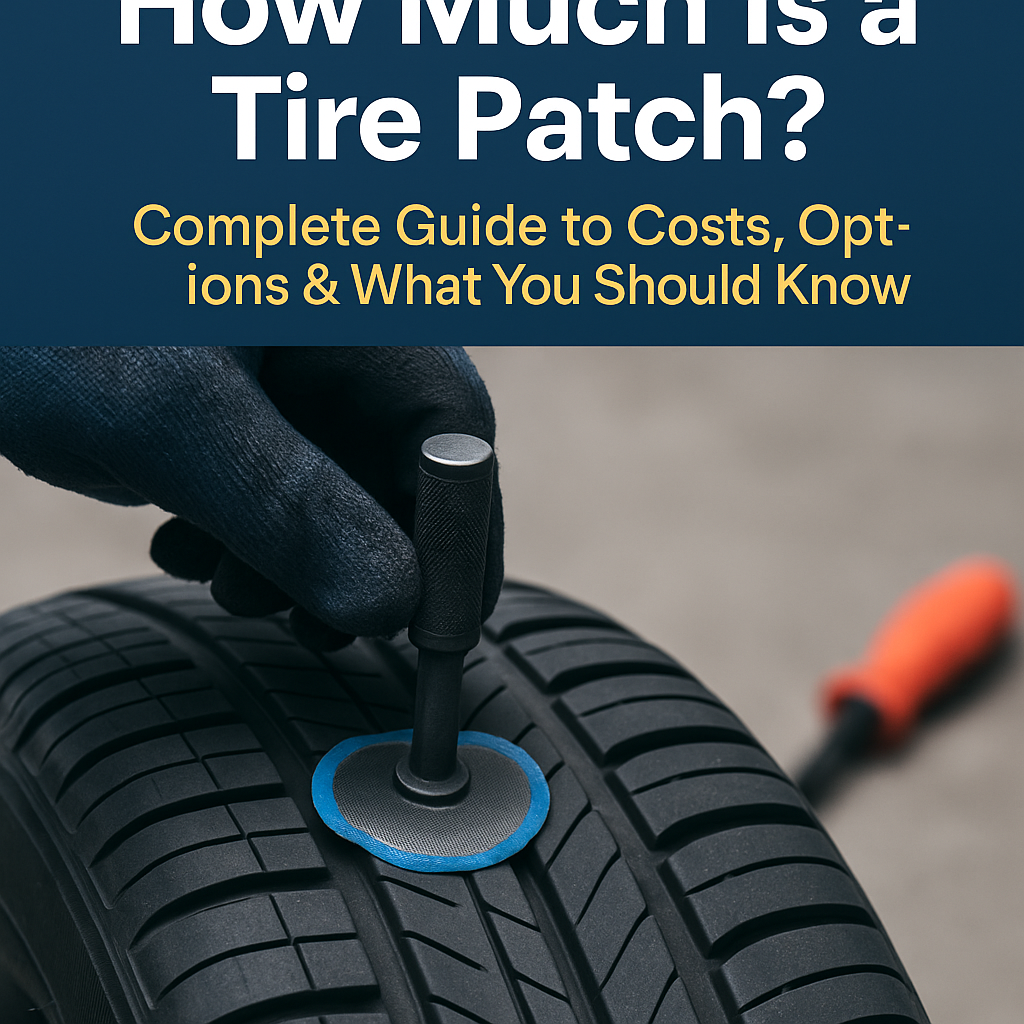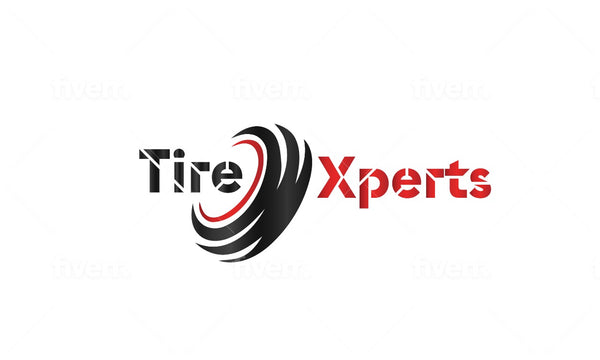
How Much Is a Tire Patch? Complete Guide to Costs, Options & What You Should Know
Share
Table of content
- 1. How Much Does a Tire Patch Cost in 2025? A Breakdown of Typical Repair Prices by Provider
- 2. Professional Tire Patching Options and Process 🚗🛠️
- 3. Patch vs. Plug vs. Patch-Plug Combination: What’s the Real Deal? 🧐
- 4. The Professional Tire Repair Process 🧑🔧
- 5. When a Tire Patch Just Isn't Enough: Knowing When to Replace 🛑
- 6. Cost of a New Tire vs. Patch: Making the Smart Call 💸🚗
- 7. Should You Replace Multiple Tires at Once? 🤔
How Much Does a Tire Patch Cost in 2025? A Breakdown of Typical Repair Prices by Provider
Wondering how much a tire patch costs? A tire patch typically sets you back between $15 and $40, depending on where and how you get it fixed. Quick DIY solutions can run under $20, but professional repairs—recommended for safety and longevity—usually hover around the $30 mark. Is it worth it? Usually, yes. But understanding your options helps keep your wallet happy and your tires rolling smoothly. Let’s dive in!
| Provider / Scenario | Price Range (USD) | Notes |
|---|---|---|
| SuperMoney (auto shops) | $10 – $40 | Typical shop patch cost |
| SuperMoney (DIY route) | $2 – $17 | Patch kit + jack, no labor |
| KBB (average repair) | $54 – $64 | Includes full tire repair, not patch only |
| JordiTireShop (independent shops) | $10 – $40 | Shop variation: indie $15–25, dealership $25–40 |
| Bimmer Mag (33″ tire patch) | $40 – $55 | Includes labor & materials |
| Yelp (internal patch + balancing) | $15 – $30 | Based on thousands of real quotes |
| Nashville Mobile Repair | $25 – $60 (shop); $75 – $120 (mobile) | On-site labor premium |
What Determines the Cost of a Tire Patch? Key Factors That Influence the Price 💸

Here's what really goes into tire patch costs:
Tire Type Matters 🚗
The kind of tire you roll around on—be it your grandma's trusty sedan, your neighbor’s hulking pickup, or your flashy, low-profile sports tires—affects the final bill. A standard tire patch cost is often around $15-$30, but fix a run-flat or a performance tire, and suddenly you're paying premium. The tire vulcanization process for these specialty tires demands skilled labor and specialized tools. According to AAA specialty tire repairs can easily jump to $50 or more
Where’s the Damage? 📍
Not every puncture is the same. Think of your tire tread like prime real estate—the center of the tread is like Main Street, bustling yet easy to fix. A puncture here usually means a simple radial tire patch, quick and affordable. But venture closer to the tire’s shoulder or sidewall, and you'll find yourself in a tougher neighborhood. Most shops outright refuse to patch sidewall punctures (too risky), leaving you shelling out for a brand-new tire.
Local Labor Rates & Services 🛠️
Ever wonder why the Walmart tire repair price is cheaper than your local dealership? Location matters. Big chains can offer discounts because they churn out repairs in bulk, while specialized local garages or dealerships, charging $30-$60+, justify higher fees with premium tools, materials, and tire balancing thrown into the package. Checking local tire repair near me prices before committing can save you some wallet pain.
Professional Tire Patching Options and Process 🚗🛠️

Patch vs. Plug vs. Patch-Plug Combination: What’s the Real Deal? 🧐
Tire Plug: The Quick-and-Dirty Fix
- Inserted from the outside.
- Cheap and quick (around $10-$20).
- But watch out: It’s a temporary solution at best. Great in a pinch, but not exactly peace-of-mind material for long-term driving.
Tire Patch: The Reliable Choice
- Applied from inside—yeah, your tire needs to come off the rim.
- Generally $20-$40, sometimes a bit more if you're hitting up a dealership.
- Considered way safer, permanent, and better for longer trips or daily commuting.
Patch-Plug Combo: The Ultimate Solution
- Basically, plug patches a superhero of tire repair. Seals the puncture from both the inside and outside.
- Ideal for slightly larger or tricky punctures.
- Typically costs a tad more, around $25-$40, but it's worth it for peace of mind on highways.
| Method | Cost | Reliability | Best For |
|---|---|---|---|
| Plug | 💲 | 🚧 Temporary, lower reliability | Emergencies, quick fixes |
| Patch | 💲💲 | 🛡️ High reliability, permanent fix | Daily driving, long-term use |
| Combo | 💲💲💲 | 🌟 Excellent reliability, permanent fix | Difficult punctures, safety-first drivers |
The Professional Tire Repair Process 🧑🔧

Ever wonder what exactly goes on in that mysterious tire shop bay?
1. Inspection
- Technicians assess the tire thoroughly. Can this sucker even be repaired? (Sidewall puncture? Forget it—get ready to buy a new tire.)
2. Tire Removal
- The tire is carefully dismounted from the rim. It ain't exactly rocket science, but proper tools and technique matter.
3. Prepping the Damaged Area
- Dirt and debris are cleaned away, and the damaged spot gets lightly buffed for a strong bond. Think exfoliation—but for your tire.
4. Applying the Patch
- A sturdy internal tire patch or a combo repair is applied using adhesives and pressure, sometimes involving a tire vulcanization process for extra bonding strength.
5. Re-mounting & Inflating
- The tire gets back on the rim, inflated to proper specs.
6. Balancing
- This step is crucial. A balanced tire means even wear, better handling, and avoiding weird vibrations when driving.
Check out Car and Driver’s guide for the nitty-gritty details.
DIY Tire Patching: Costs and Considerations 🧰

For the DIY warriors (or those simply trying to save a quick buck), here’s what you need to know.
DIY Kit Costs 💳
- Usually around $10–$30, depending on brand and complexity.
What's Typically Included?
- Tire plugs (usually a dozen or so)
- A reamer (that sharp tool to prep the hole)
- Plug insertion tool (pretty straightforward)
- Rubber cement (like glue, but tougher)
Pros of DIY Repairs ✅
- Cost-effective, especially if money’s tight.
- Convenient for emergencies—no waiting around for AAA.
Cons of DIY Repairs ❌
- Often temporary—plugs aren't considered reliable for extended use.
- Risk of improper installation means potential further damage.
- Doesn’t include tire balancing (your tire could wobble and wear unevenly).
- Definitely not suitable for sidewall punctures.
When should you go DIY? If it’s a tiny puncture in the tread area and you need to limp home safely, DIY kits can save your day.
Otherwise, trust me—take it to the pros. You’ll thank yourself later.
When a Tire Patch Just Isn't Enough: Knowing When to Replace 🛑
Sorry, folks—sometimes, patching isn’t gonna cut it. Let's look at scenarios when patching becomes a no-go situation:
-
Sidewall
Damage 🚩
Damage here means structural weakness. Don’t even think about patching it. -
Close-to-Sidewall
Damage 🔍
Most mechanics won’t touch anything within 1 inch of the sidewall shoulder. Too risky. -
Large
Punctures or Multiple Holes ⚠️
Anything over 1/4 inch? Nope. And several punctures close together? That tire is done. -
Worn-Out
Treads 🚧
If tread depth is below legal standards (check the NHTSA guidelines), it’s time to retire the tire. -
Internal
Damage & Exposed Cords 💣
Bulges, cracks, or internal damage mean your tire could blow anytime. Replace immediately. -
Driven
on Flat Too Long 💥
Ever limped to a gas station on a flat? Bad news: internal tire structure damage. Replace immediately.
Cost of a New Tire vs. Patch: Making the Smart Call 💸🚗

So you've hit a pothole or found yourself greeted by a shiny new nail in your tire—bummer, right? The next thought rolling around in your head is probably, "Can I patch this thing, or am I about to kiss my paycheck goodbye for a new tire?" Before you panic, let’s slow down and chat about how much a fresh tire really costs versus a simple tire patch.
How Much Does a New Tire Actually Cost? 🛞💲
Okay, real talk—a new tire isn't exactly pocket change. You're typically looking at somewhere between $100–$300 per tire, depending on factors like:
-
Tire
Size & Vehicle Type:
Compact sedans and economy cars usually keep tire costs around $100–$150. Larger vehicles like SUVs and trucks can quickly push costs toward the $200–$300 range, or even higher for premium tires. -
Tire
Quality & Brand:
Sure, you could snag some budget tires at Walmart for $90 a pop, but if you’re after high-performance or all-season tires, expect something closer to $180–$250 each. Fancy luxury car or sports tires? You might be paying upwards of $300–$500 per tire. 😳 -
Installation
& Balancing Fees:
Don't forget this sneaky extra—installation, mounting, balancing, and recycling fees can easily tack another $15–$30 onto each tire.
Should You Replace Multiple Tires at Once? 🤔
Ah, here’s the real kicker—sometimes replacing just one tire means it’s smarter (though admittedly more painful for your wallet) to replace two or all four. Why?
-
Uneven
Wear:
Tires with uneven tread depths mess with handling and safety, especially in wet conditions. -
Vehicle
Handling & Balance:
Mixing old and new tires, especially on a front-wheel or all-wheel-drive vehicle, can cause weird handling issues. -
Safety
& Long-Term Savings:
Investing upfront in multiple tires often pays off in better fuel efficiency, smoother rides, and fewer visits to the tire shop.
